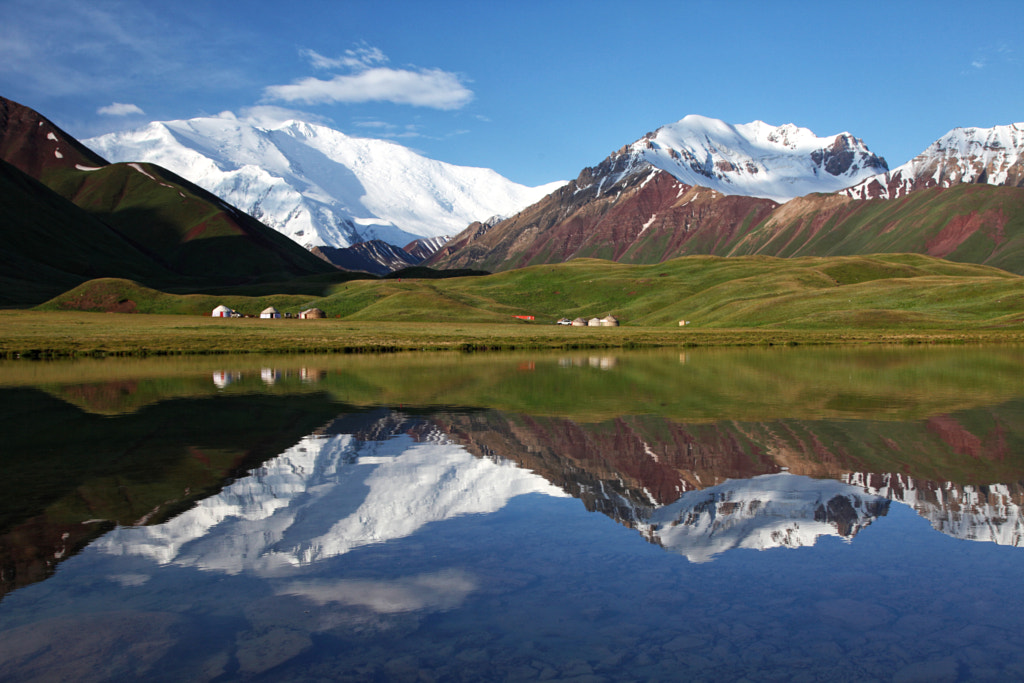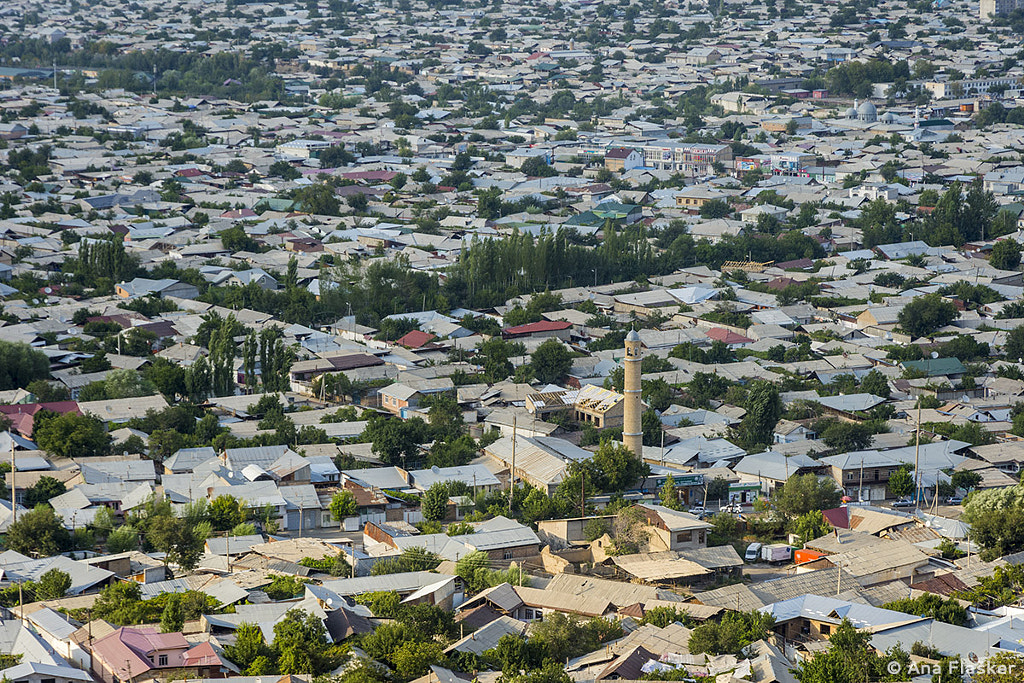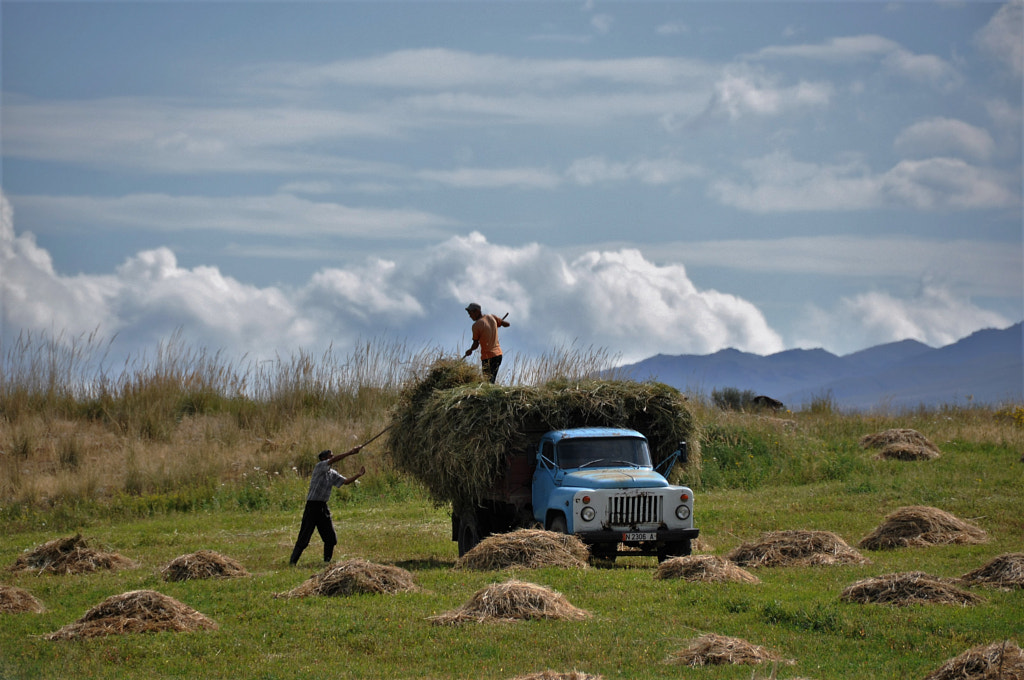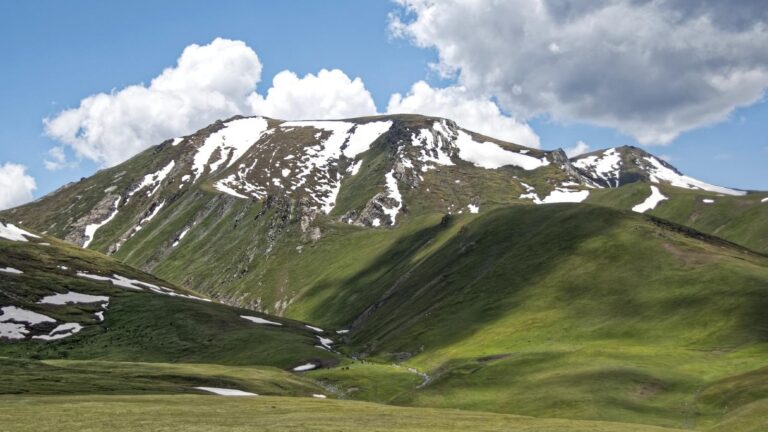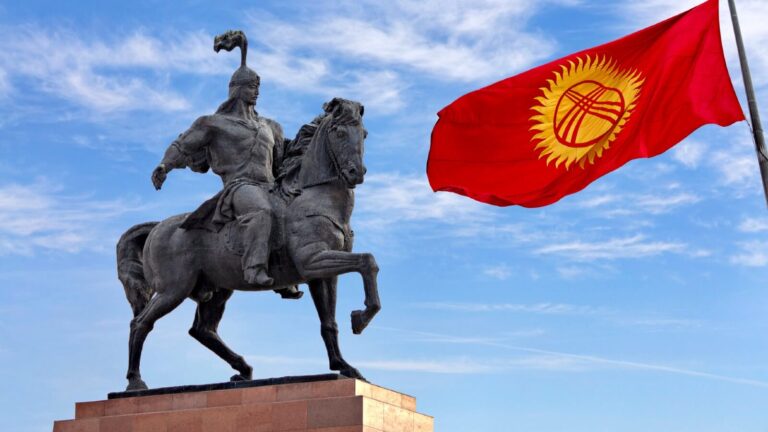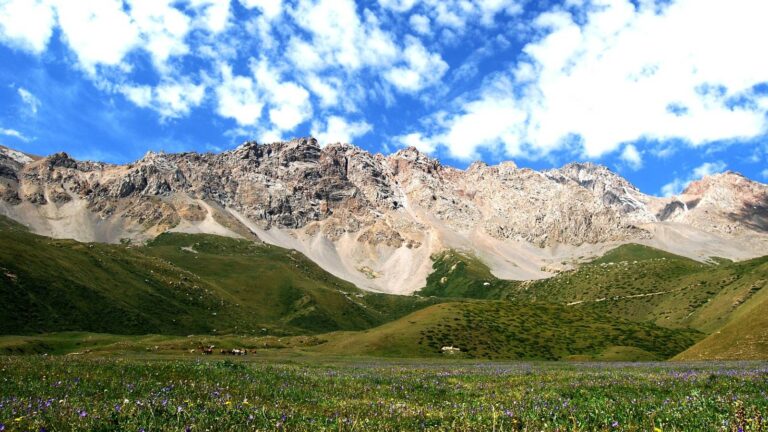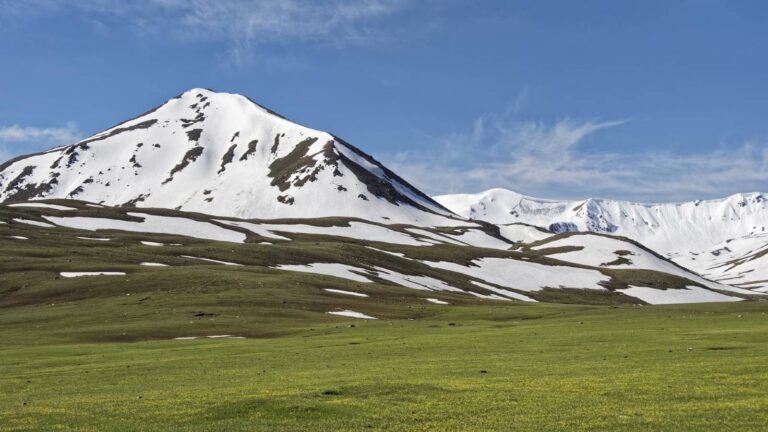Osh International Airport is linked by direct flights to Russia, Turkey and the Middle East, as well as domestic flights from Bishkek and Batken. Travellers can enter Osh region overland through the Pamir Highway from Tajikistan (though this border is closed at the moment), or through the Irkeshtam Pass from China, as well as from neighbouring Uzbekistan just a few kilometres beyond the edge of Osh city.
Within the Kyrgyz Republic, Osh city and region are connected by road to Batken and Jalalabad regions, and through Jalalabad to the rest of the country. The 600km drive from Osh to Bishkek passes through spectacular mountain landscapes, but the trip can take 12 or more hours. Many travellers opt to overland in one direction and return by domestic flight.
While Osh itself has no train service, nearby Andijan (Uzbekistan) is well-connected via Tashkent (Uzbekistan) to Kazakhstan and Russia.
At the centre of the Ferghana Valley, and thus the heart of Central Asia, Osh city is most famed for the Sulaiman-Too mountains right in the centre of town. An important historical and religious site, the mountain is believed to have been revered for more than 1500 years.
South of the city, Abshyr Ata Waterfall comes straight out of a sheer cliff – local pilgrims ascribe healing properties to the water and often collect it to take home. Further into the mountains, Kyrgyz Ata National Park is a popular day hike destination and visitors can typically take the opportunity to overnight here in yurts.
To the east of Osh city is Gulcha, historic home of legendary Kyrgyz heroine Kurmanjan Datka, and beyond Gulcha a modern highway winds past turnoffs for alpine lakes and shepherds’ pastures to the wide Alay Valley.
The valley is famous among mountaineers as the base camp for Lenin Peak, the Kyrgyz Republic’s second-highest mountain, which is among the easiest of the world’s 7000m+ ascents. Trekkers also come for multi-day hikes over remote passes and for CBT‘s pretty yurt camps alongside the Tulpar Kol lakes – a much less intensive way to get a view of Lenin Peak.
Osh oblast was established on November 21, 1939. The regional center – the city of Osh – is one of the most ancient Central Asian cities. Osh was first mentioned in Arabic sources of the 9th century and described there as a large city with its fortified citadel, square and gates – the Gates of Mountains, the Gates of Water and the Gates of Mukgde – fire worshipers.
Scientists still cannot come to a common opinion on the etymology of the Osh city name. The most probable version is that King Solomon (Sulaiman) led his army and saw the settlement. The king said: “Hosh!” (“Stop!”) And the city got its name.
Osh was part of Tamerlane’s empire in 1380. The city stood on one of the branches of the Great Silk Road, the ancient trade route that connected East and West. The trade of the cities of Fergana with East Turkestan went along this branch – through the city of Osh, its urban and further to Alay. But you can drive from Osh and through Uzgen to Lake Issyk-Kul and from there to East Turkestan.
The Osh region presents an amazing, ancient culture of southern Kyrgyzstan, which is 3-4 thousand years old. These places have always stood at the crossroads of the trade routes of the Great Silk Road, leading from east to west.
This is the place where you can see real oriental bazaars and medieval architecture of the Muslim East. The city of Osh, which is the capital of the region, has been the religious center of the region since ancient times. And its main attraction – Sulaiman-Too – is associated with the legendary king and Prophet Solomon.
Until the Covid-19 pandemic the CBT offices in Osh and Alay held regular tourism festivals throughout the summer, including a delightful yak games festival at Tulpar Kol. Check with them directly to verify what events will be held in coming seasons.
Gastronomy
Osh is known for having the most delicious food in the country. It is no surprise, as Osh has combined the best culinary traditions of several cultures over thousands of years.
Osh samsa – Samsa of huge size is served with pickled onions and nosey tea. They need to be eaten in a special way: You need to cut the hard bottom side, eat the inside filling with a spoon and then soften the dough in the broth or tea before you eat it.
Maida manti – Maida manti are one of the few vegetarian dishes in Kyrgyzstan. The small and handmade dumplings are filled with mashed potatoes and served with spiced onions and sour cream. This variety of the central Asian manti is only available in the region of Osh.
Uzgen plov – Plov is available throughout Central Asia, and while the ingredients and cooking techniques are all similar for the most part, Uzgen plov is different. It is made of devzira rice, a special type of rice grown only in Uzgen and yellow carrot.
The northeastern part of the Osh region is located in the branches of the Tien-Shan (Fergana Range). In the south and west of the region, there are Zaalaysky range, Alai and Turkistan ranges. The highest point of the region is Lenin Peak (7134 m) – the second highest peak in Kyrgyzstan.
The region is drained by the Kara Darya which flows northwest to join the Naryn River to form the Syr Darya in the Ferghana Valley. Mountain gorges and valleys are home to more than 100 lakes and waterfalls.
The mountainous regions are famous for the beautiful caves. Some caves have historical and archaeological value; others are filled with various sagging and geological formations. Some are inhabited by colonies of the Red Book bats.
The continental climate prevails on the territory of the Osh Region. At an altitude of 600-1100 m, the climate is warm, semi-desert. Winter is moderately warm (average temperature in January is -3 – + 4° С), rather short, and summers are hot (average temperature in July 24-25° С) and dry.
Among the regions of the country, the level of economic development of the Osh Region in terms of the main indicators calculated per capita is slightly lower than the national average and is characterized as average. As a result of social and economic reforms in the country, there have been structural transformations in the sectors of the real and social sector and a multi-structured market economy has developed with private, collective and state-owned form of property.
Key industries in the region, including large enterprises, mainly operate on the domestically-produced raw materials basis and the products of these industries play a significant role in the country. The major industries, including cotton and tobacco processing, textile production, and food processing, supply the region with jobs.
Agriculture is the main economic sector in Osh region, contributing more to GDP than heavy industry. But despite being often referred to as “the Kyrgyz Republic’s Southern Capital”, the city and region both suffer from a shortage of work. As a result, many working-age residents travel abroad to Russia, Turkey, the Middle East, and Europe in search of jobs – typically sending remittances home to support families that remain behind.



